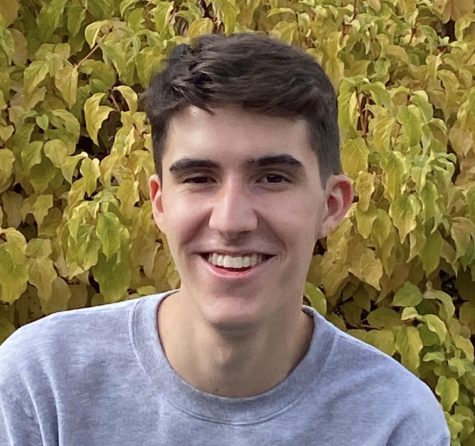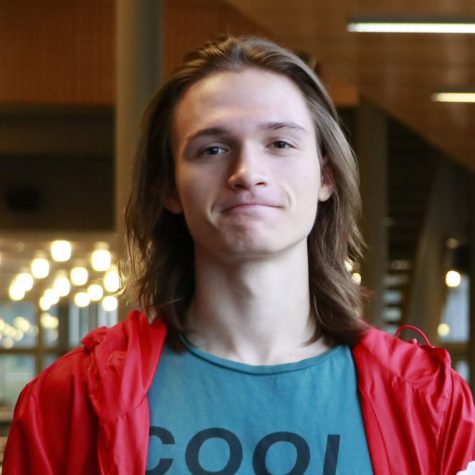Students Strike for Climate Action in Seattle
RUNNING OUT OF TIME Students put the pressure on world leaders to act on climate change.
October 7, 2019
On Friday, Sept. 20, thousands of students from across the greater area of Seattle took to the streets to call for action on the mounting climate crisis, skipping school for something they argued was more important: their future. The strike was part of a larger global movement, inspired by the actions of Swedish teenage climate activist Greta Thunberg, who began skipping school every Friday in 2018 to advocate for climate justice. Protesters decided to strike the day before a United Nations meeting on the climate crisis, hoping to put the pressure on world leaders to solve the many issues brought forward by global warming. The Global Climate Strike movement called on people all over the world to “take part…by refusing to accept the status quo.” The Seattle strike was organized by a multitude of local activist groups, who described the event as a “peaceful and powerful youth-centered mobilization.” Students began the day in Cal Anderson Park, participating in informational workshops and making signs in preparation for the march. Later in the day, the protesters began to walk towards Seattle City Hall, converging on its steps for a multitude of speeches. In a separate strike, tech workers met at the Amazon Spheres to march and join the youth strikers in the name of climate action.
Junior Sabreen Tuku helped organize and participated in the strike on Friday. She spent the morning working with the Sunrise Movement, a youth-led political action committee focused on climate reform, informing attendees of the strike about what the organization had been doing to lobby politicians in the name of environmental justice. Tuku, who one day hopes to be an environmental lawyer, has been working in the field of climate action since seventh grade. When asked about why she decided to attend the strike, she said it would simply “be a waste of everything [she’s] fought for” to not go. She described the overall demeanor of the strike as “hopeful and energizing, yet pessimistic,” noting that there is “more to this issue than just marching from Cal Anderson to City Hall.”
It was apparent to all in attendance that the reality of the situation was grave and deeply disturbing, but the huge number of people striking was an encouraging reminder to many about the sheer force and passion behind this grassroots movement. The overarching fear for the future did not deter any of the attendees, as they marched to City Hall, delivering fiery and fervent speeches. Those who spoke were primarily young activists who are already experiencing the devastating effects of climate change, mostly indigenous and lower-class communities. The speakers made sure to highlight the importance of the activism of people of color, reminding those in attendance that they have been at the frontline of this issue for decades. Protesters outlined a list of demands for politicians working within both the local and national spheres. These were included, but not limited to, a Green New Deal, a reduction in fossil fuel usage and carbon emissions, and the preservation of biodiversity. Many blamed the Trump administration for its threats to abandon the Paris Climate Accords and continuous rollbacks of Obama-era environmental policies. Tuku added that the U.S. was behind many other countries on the issue despite accounting for roughly 15 percent of global emissions, saying, “The conversation needs to be about how we confront climate change, not if it’s real or not.” Many of the ideas brought forward by the protesters have been gaining popularity. Representative Alexandria Ocasio-Cortez (D-NY) has introduced a Green New Deal resolution to the House and countries around the globe have committed to net-zero carbon emissions by the year 2050. Scientists across the globe have expressed support for these measures, but warn that even they may not be enough, giving world leaders a maximum of 12 years to reverse the damage done by climate change.
Despite the vast array of detailed plans outlined by the protesters, the march also left room for individuals to merge activism with self-expression through the creation of posters, often humorous and witty, calling for climate action. One, for instance, showed a drawing of the Earth with President Trump’s hair, the writing under it stating that “you can’t comb over climate change.” Seeing younger children with posters “really resonated” with Tuku, who said that seeing elementary-age kids at the protest was “cute, but also frightening that they have to be out here fighting for a future at such a young age.”
When asked about how other students could make an impact, Tuku responded, “Educate yourself first. Then educate the people around you. People you know well are more likely to listen to what you have to say about this issue than a stranger on CNN.” This sentiment was clearly shared by all the students in attendance, not just in Seattle, but around the world in places like Nairobi, Mumbai, Rome, and New York City. Striking students expressed frustration at the widespread inaction by world leaders, yet showed themselves to be a powerful force in the fight for change. They put emphasis on the notion that as children, they should not have to be the ones taking a stand on this issue. Greta Thunberg echoed this in her speech to Congress on Sept. 17, 2019, speaking of a dream she had for the future, “that governments, political parties, and corporations grasp the urgency of the climate and ecological crisis…and take the measures required to safeguard the conditions for a dignified life for everybody on earth. Because then – we millions of school striking youth – could go back to school.”




